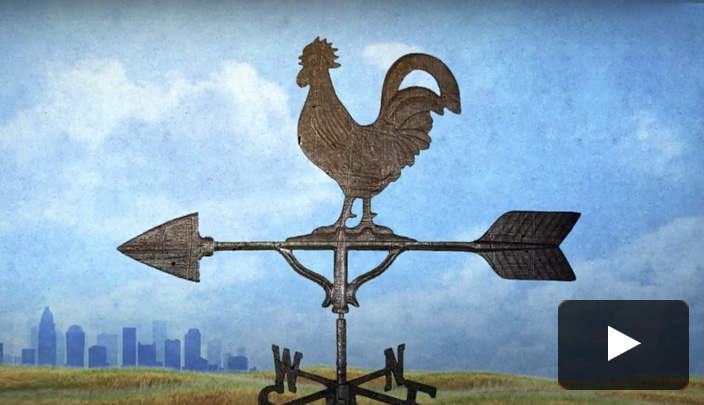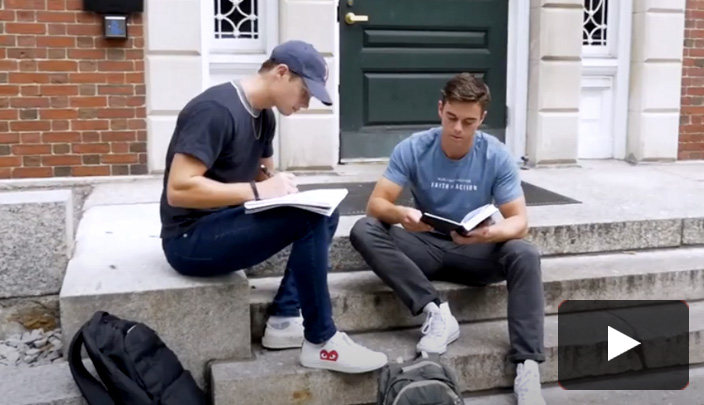by makoto fujimura
In my studio, I make art. The term “Theology of Making” (the title of my upcoming book) amplifies how this human act is connected to the divine presence. Simply put, when we make, God “shows up.” Therefore, before I begin a discourse on what God has done to make even our broken shards of life invaluable essences of the new creation, let me began by describing the creative process that an artist knows well, and how God the artist reveals a vision beyond the “fixing” of our lives, a type of theology.
“In the beginning, God created…” (Genesis 1:1). It is one of the large themes of my new book to see the redemptive act of God, the ultimate act of Christ’s sacrifice at the cross of Calvary, through the lens of creation and the Holy Spirit’s work to awaken in us the potential of the new creation. My focus is to see this entire Gospel narrative be affirmed. Further, we are invited as God’s co-heirs to co-create into that future (Romans 8:16).
Much has been made of the “spirit of the world” as a force of willful rebellion against God’s will and creation. Imagination and art have been seen as suspect, as human arts have been associated with the “spirit of the world” (a common translation of the Greek word stoicheion) or “flesh” (from the Greek sarx) rather than the Holy Spirit. For this artist, the spiritual battles are certainly real, and our “flesh” is at work in our lives to draw us away from our true selves as God has intended. Theology of Making can help us understand the effect of idol making connected with the “flesh.” When we treat human institutions or nature as God, or when we rely on human ego alone to determine our future, we are creating idols which attempt to replace God at the center of our being and our hearts. We must seek to move toward restoring imagination and creativity, as based in the sanctified realm of the Holy Spirit and as made possible by Christ’s sacrifice and the Holy Spirit’s gift as an invitation to co-create into the future of God.
There has not been much written about exactly what it means to “co-create into the future of God.” By “co-creating” I do not mean that somehow, we have the equal weight of power or knowledge to “co-create” with God. God is the greatest power there is, so what does it mean to co-create? To co-create means to be invited to a dance, invited by God’s grace to be on the stage, to step into a journey of new creation that we do not yet fully understand. For mysterious reasons, God chooses to depend on fallen creatures to steward God’s gifts, as poignantly signaled by the incarnate child in the manger who, though he was God, needed human help to survive. Through this weakness and vulnerability, God incarnates into the world full of danger and violence.
Many will assume that the word “redemption” includes this invitation to co-create into the future. But often, the term “redemption” is understood as our return to a perfected state, rather than the new. There has been much theology written on redemptive purposes for salvation, purposeful goals, but when it comes to this new creation which the various writers of the Bible point to, we have very little in the way of a theologically developed thesis. I have found a harbor in Bishop N. T. Wright’s exquisite theological writings, particularly the “New Creation” chapter in his recent 1,600 pages of discourse entitled Paul: A Biography.
The typical theological path is Creation – Fall – Redemption – Restoration. “Restoration” can assume the path back to Eden. Restoring a broken world is a noble goal, and yet biblical promises go further than even that ideal. Theology of Making modifies the sequence to Creation – Fall – Redemption – New Creation. Of course, the redemptive purpose is the central tenet of the Christian Gospel; Jesus came to “liberate us from our bondage to decay” (Romans 8). Yet, in my journey of creativity I have learned that darkness will also shed light on the depth of grace that we can journey into. It is through the lens of creation that we can understand the fall. The Holy Spirit can transform us into people who abound in the “fruit of the Spirit” (Galatians 5). Such fruit, if it is truly the Spirit’s operation, will be manifested in culture as well as individuals. Thus, “Culture Care” is the vision to manifest the “Spirit-filled Life” into the heart of culture. Through the lens of the New Creation, we can fully understand what that manifestation will look like, and come to know deeply the redemptive purposes of God.
St. Paul writes in his epistle to the Galatians: “But the fruit of the Spirit is love, joy, peace, forbearance, kindness, goodness, faithfulness, and self-control” (Galatians 5:22). What I offer as “Culture Care” is a consideration of the work of the Spirit in culture. In other words, we ask not just how you or I may be doing as a follower of Christ; we also ask audaciously, “How is our culture doing?”
It seems clear that for all the talk in the church about being filled with the Spirit, and despite our individual focus on personal spiritual formation, we exhibit very little evidence of such spiritual fruit as the body of Christ and in the larger culture. We may argue that we should have these qualities in the church, but cannot expect that to spill over into the world. Okay…then, I ask, what does the world perceive to be the culture of the church? The world sees Sunday morning as the most segregated time of the week. Instead of exhibiting qualities that Christians understand to be the fruit of the Spirit, today the world perceives Christians as exhibiting an outward face of hatred instead of love, fear instead of joy, anxiety instead of peace, a judgmental stance instead of forbearance, jealous exclusion instead of kindness, narcissism instead of goodness, fear-filled cynicism instead of faithfulness, rage instead of self-control. The world does not see us as being “filled with the fruit of the Spirit” people.
Theology of Making is a journey to be Spirit-filled in making, so that our culture, as the larger manifestation of our communal journeys, can find its way to these qualities of love.
One blind spot in modernity must be mentioned before attempting to come to understand our theology and the Gospel. We create false dichotomies even in trying to understand the Truth. We have a tendency to communicate the Gospel as a “heaven vs. hell” rational proposal. Such an approach assumes a deeper dichotomy: one is on the right side, or decidedly on the wrong side by claiming to be an atheist. It makes the false assumption that we can, in our own wisdom, know we are on the “right side” of the Truth. We create Christian culture as the antithesis of secular culture that we understand to be linked with that damnation to come. In this false model, we must defend “our culture” from heathens invading our zones and affecting our children. This naturally gives birth to a culture-wars mindset.
Culture within the church will certainly be of different values than the broader outside culture. But the Biblical narrative of the Good News is not about our black and white judgment of who goes to heaven and who might end up in hell; we do not get to separate the “sheep from the goats” (Matthew 25) ourselves. It’s not about boycotting people and ideas tied to the wrong culture, and only supporting those that have it right, and therefore residing only in a cultural milieu that is “safe for the whole family.” (Although there are merits to creating a “safe place” for families culturally, I state here what the gospels present as the need for us to also meander outside of the “pen.”) This false dichotomy of an anti-culture stance, based on a scarcity mindset, can undermine the promise of the Gospel toward the abundance of God, and lead us to put earthly power struggles at the center of theology. In such a culture wars mindset, contrary forces vie for domination, and perhaps even believe in a false sense that we can control the outcome and shifts in power and identity. This often creates a warlike mentality based in fear. Only a deeper examination of the Trinitarian perspective on relationships and community, which leads to abundance of God, will allow us to connect with the true depth and colors of God’s redemptive purposes in our journey toward the new creation.
For all of us steeped in modern thinking that creates dualities and contraries, even the statement above can be a huge challenge to read and process. Spiritual battles are real, and yet our pitting of Christian soldiers against the “enemy of culture” may be exactly what the enemy is using to distract us from being makers and mercy givers. Thus, we should consider delving into what philosopher Esther Meek calls our need for “epistemological therapy” to define and reframe God’s making in and through love. It is crucial to create an alternative to seeing salvation and culture from the culture wars mindset. The salvation offered through the sacrificial atonement of Christ on Calvary is at the heart of the re-creation story that leads us toward the new creation. The Bible is all about making, first through God’s own act of creation, that leads to a series of our mini-creations called Moses’ Tabernacle and, eventually, Solomon’s Temple. This making of temples leads to the church becoming the temple of Christ after Pentecost.
When we make, we tap into the generative possibility that flows out of Genesis 1, and encounter the Spirit’s reality to manifest in our brokenness; we also realize that even shattered vessels can, under the Master’s illumination, lead to new creation. A creative journey allows for exploration of a divine plan for our “deep calls to deep” journey (Psalm 42) even through darkness, doubt, and suffering; there is a relationship between such redemptive purposes and a call for us to create into the new creation. This call has been part of the Spirit’s guidance on my journey as an artist. Christ’s sacrifice leads to the beautiful, into the heart of new creation. | cu
This article was adapted from artist Makoto Fujimura’s upcoming book, Theology of Making.





